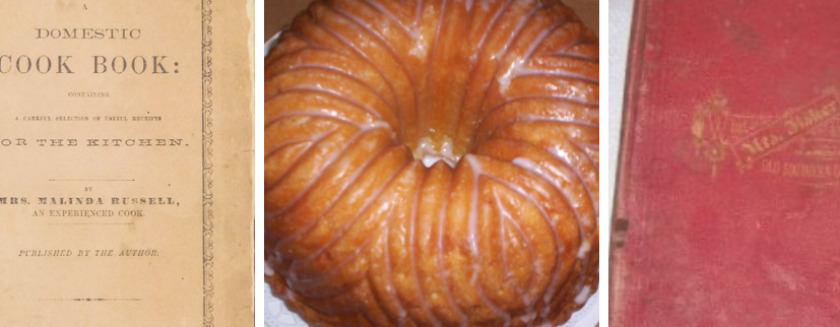Kick me for not straight out calling the women in my last post top chef-styled celebrities, and for not telling you that you can and should own copies of their work — the first black cookbooks published in this country.
It’s just that I lost my webmaster and I was going a little crazy at post time. I don’t make a dime off of sales of these books. I just think they are valuable additions to anyone’s cookbook collection. And, if you aren’t collecting books yet these are a great place to start. Indulge me, as I fuss over them a little while longer.
At the end of the 20th century, cookbooks were called household manuals. They emphasized domestic economy and food science, and included “tested” receipts, the old-school word for recipes.
The most popular texts encouraged young housewives to “get rid of the false sentiment that grades different ranks of work as more or less respectable,” and reminded them that “cooking “possesses the dignity of an art, of science, and of philosophy.”
At the same time, most authors of these books claimed that black cooks were too ignorant to be able to translate the recipes from their heads to the written page. If the cook was credited, her recipe was written in illiterate language meant to demean.
But Malinda Russell and Abby Fisher dispute this image. Their little books reveal cooks who truly understood technique, whether they shared that information with the mistress or not. They might not have understood the hydrogen ION concentration and pH of some common foods, but both women were counted among those sensible and experienced cooks of their communities. Each one shared the love of good food and cooking with friends.
*
The limited-edition facsimile reprint of Malinda Russell’s A Domestic Cook Book: Containing Useful Receipts for the Kitchen, (printed in 1866), is available from the University of Michigan. The booklet was edited by Jan Longone and costs $25.
What Mrs. Fisher Knows About Old Southern Cooking, published in 1881 by Abby Fisher, may be purchased through Amazon.
Malinda Russell’s Elizabeth Lemon Cake is a lovely springtime pound cake, which I make even more special for family and friends by drizzling with a a sweet-tart glaze of Meyer lemon juice and powdered sugar.
In Her Kitchen
Elizabeth’s Lemon Cake
Ingredients
- 1 cup unsalted butter, at room temperature
- 2 1/2 cups granulated sugar
- 5 large eggs
- 1/4 cup grated lemon zest
- 3 cups all-purpose flour
- 1/2 teaspoon baking powder
- 1/2 teaspoon baking soda
- 1 teaspoon salt
- 1 cup buttermilk
- 1 teaspoon vanilla
- 1/2 cup freshly-squeezed lemon juice
- Tangy Lemon Glaze
Instructions
- Have all ingredients at room temperature. Preheat oven to 350 degrees. Grease and flour a 12-cup fluted tube pan or 2 (8×4-inch) loaf pans. Cream together the butter and 2 cups of the sugar in the bowl of an electric mixer until light and fluffy, about 5-7 minutes. Gradually beat in the eggs, one at a time, beating well after each addition. Beat in the lemon zest. Sift together the flour, baking powder, soda, and salt in a bowl. Combine buttermilk and vanilla. With the mixer on low speed, alternately beat in the dry and liquid ingredients, beginning and ending with the dry ingredients. Pour the batter into the prepared pan and bake for 50-60 minutes or until a wood tester inserted in the center comes out clean. Combine remaining 1/2 cup sugar with lemon juice in a small saucepan and cook over low heat until sugar dissolves. When cake is done, use a skewer to poke holes over the entire top. Carefully spoon the lemon syrup over the cake, allowing syrup to soak in before adding more. Cool in the pan for 30 minutes, then invert onto a wire rack to cool completely. Drizzle with Tangy Lemon Glaze.
- Tangy Lemon Glaze Combine 2 cups sifted powdered sugar and 3-4 tablespoons freshly-squeezed lemon juice. Stir until sugar is dissolved. Spoon over cooled cake.
Number of servings: 12



I love it! The thing I find challenging with incorperating culinary history into my daily life is the research. While I was familiar with both of these black culinary pioneers, its all the other nameless faces we know about in theory, but have no way of accessing in a tangible, multimedia format. I suppose its the new school kid in me, the want it now and online attitude we all get caught up in at times, but its more that when I talk to students that don’t feel connected to our history that I realize the reality that this disconnect in accessibilty creates. Thank you for all your work and for the jemima code! All the numerous muse moments you have put into the culinary world do such a graceful job at bridging that gap!!
I thank the internet for helping me give the women and audiences a place to meet up, but virtual investigating is difficult because there are so many myths and opinions out there. That’s why I’m sticking close to actual facts and food and cooking that I can see and touch in person. Eventually, I hope that more people will come and share their memories and recipes. Thanks for joining the conversation.